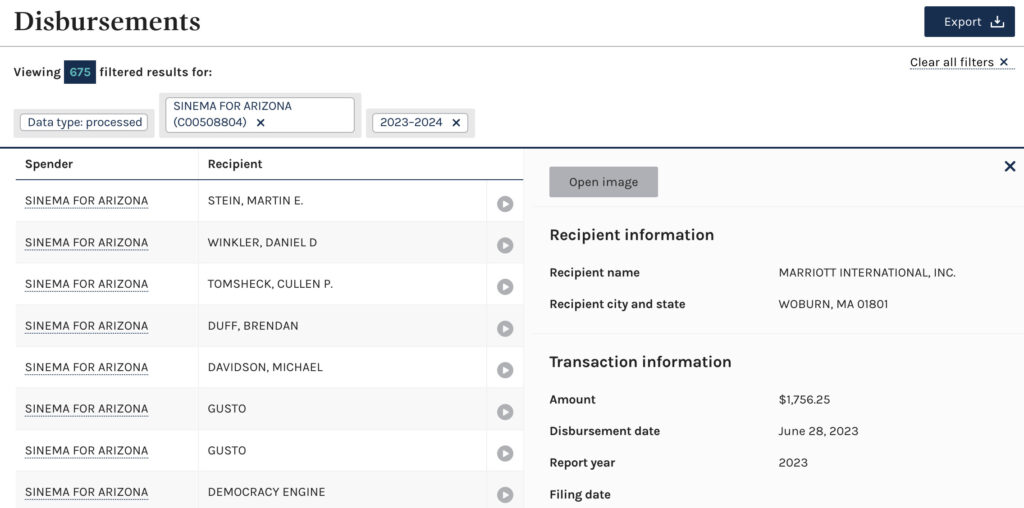Last week, the New York Post reported that, since 2021, Krysten Sinema spent $20,000 of campaign donations on ‘wine-related expenses.’ Some donors were not too happy to discover that their contributions have gone toward luxury hotels, private jets, and posh restaurants. However, Sinema is not the only politician to use campaign donations for personal benefit. The Wall Street Journal noted that Trump’s PACs have spent millions on his legal fees this year alone and although the FEC does prohibit using funds for personal use, there is a lot of gray area to what constitutes ‘campaign or officeholder activity.’
Donors have a right to know if their contributions are not going toward helping a candidate win an election. We have previously discussed OpenSecrets, a great starting platform for campaign finance stories, but now let’s talk about the original source for campaign finance data – the Federal Election Commission (FEC).
Where to find the data
Curious how reporters were able to view the contributions and distributions from Sinema’s campaign funds? Here’s where you can find that data on the FEC website.
Starting on the FEC data page is a map where you select the state and district, or just below it you type the specific candidate you are looking for. You can also choose to look directly at a list of the candidates raising or spending the most money this election cycle. All of these are great starting points.
Once you find the candidate, in this case Sinema, you will be directed to a financial summary page that looks something like this.

From there you can begin browsing contribution receipts or focus on where the money is being distributed. In the list of disbursements, you are able to click on any line item for more information about each transaction and export the data to look for patterns or outliers.

Getting help
The FEC provides written instructions on its website on how to download and use raw data files in order to find information. Even if you don’t know what you are looking for, it is still worthwhile to learn how to use the tool and be on the lookout for a newsworthy item.
Another great thing about the FEC is you can physically visit the records office for assistance (if you are in the D.C. area) or you can get help from a staff member by phone or email.







